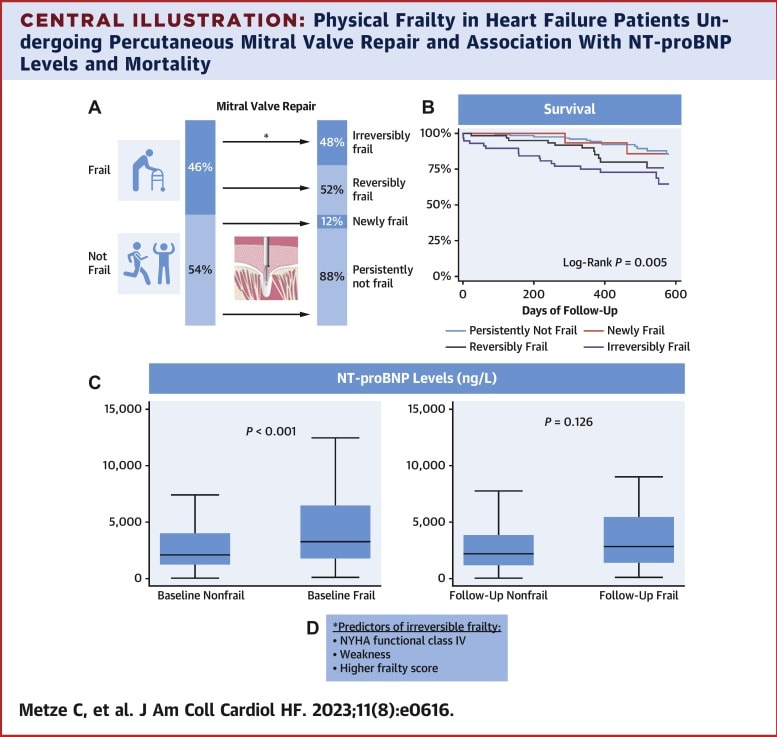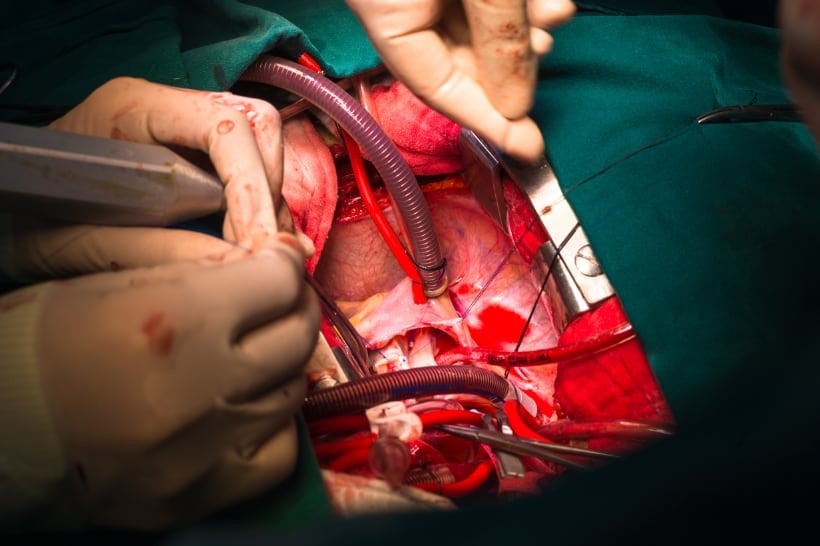By Dr Florence Mouy
Edited by Dr Ahmed El-Medany
A significant proportion of patients with heart failure are physically frail and these 2 conditions share similar physical characteristics. Many patients with significant mitral valve regurgitation are not suitable of invasive management for their valvular disease due to their baseline frailty scores. How much the clinical syndrome of heart failure contributes to physical frailty is however unclear.
Metze et al prospectively studied 258 patients with symptomatic secondary mitral regurgitation undergoing percutaneous mitral valve repair (PMVR) and assessed its impact on their frailty score before, and a median of 6 weeks following the procedure.
118 (46%) of patients in this study were considered ‘frail’ at baseline, using the Fried frailty criteria, significantly reducing to 74 (28.7%; P<0.001) at follow-up using the same criteria, following PMVR (Figure 1). Of the remaining 140 (54%) of patients considered ‘not frail’ at the start of the study, 12% newly qualified as frail following PMVR (Figure 1).
In comparison with patients who were persistently not frail (reference group HR: 1.00), mortality risk continuously increased for patients who experienced new frailty (HR: 1.41 [95% CI: 0.41-4.86]), those who had reversal of frailty (HR: 2.17 [95% CI: 1.03-4.57]), and those who were persistently frail (HR: 3.26 [95%: CI 1.62-6.57]; P = 0.006 for trend).
Predictors of irreversible frailty were: NYHA functional class IV, presence of weakness, and higher baseline frailty scores. Whilst baseline frailty was significantly associated with levels of NT-proBNP, this was no longer the case following PMVR.
In conclusion, Metze et al showed that PMVR in patients with heart failure is associated with almost a halved burden of physical frailty, and thus heart failure contributes to the clinical syndrome of physical frailty. Importantly, it seems that the burden of frailty can be modulated though treatment of heart failure symptoms, and considering the prognostic significance of frailty dynamics, this study supports prioritising the management of clinical frailty as a primary treatment target in patients with heart failure.

Figure 1: Central illustration demonstrating the main findings from Metze et al, 2023. Sourced from Metze C, et al. J Am Coll Cardiol HF. 2023;11(8):e0616
Read more here: Metze C, Iliadis C, Körber MI, von Stein J, Halbach M, Baldus S, Pfister R. Disentangling heart failure and physical frailty: prospective study of patients undergoing percutaneous mitral valve repair. JACC: Heart Failure. 2023 May 24.
https://www.sciencedirect.com/science/article/abs/pii/S221317792300197X

